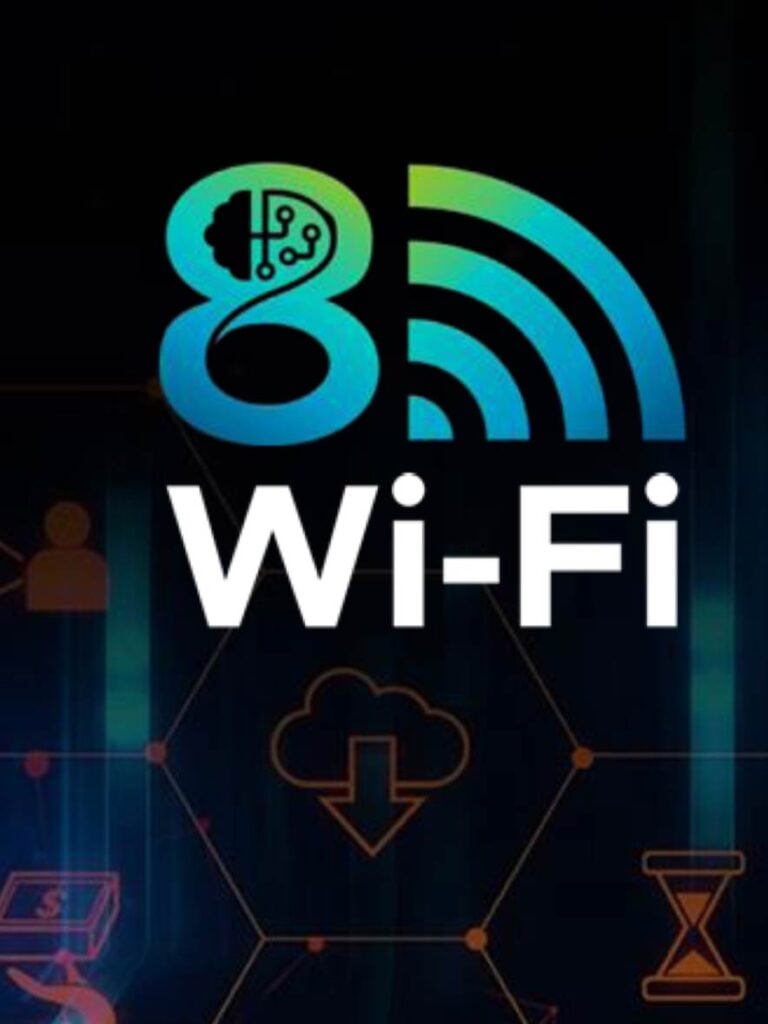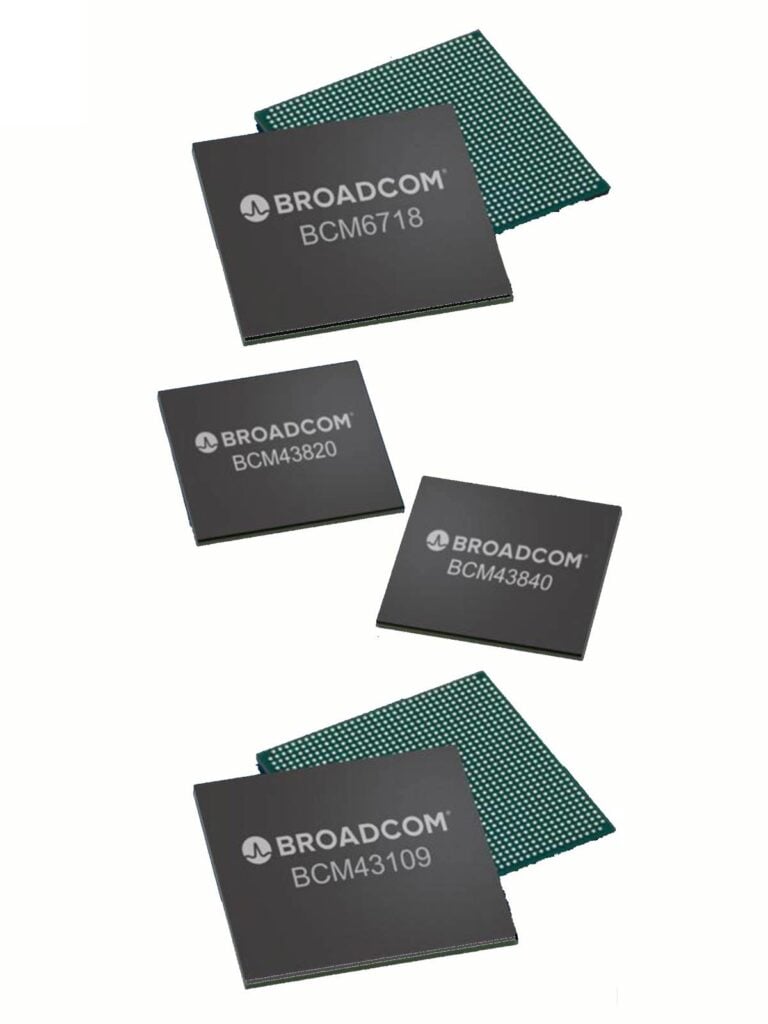In a few months, Wi-Fi 7 will celebrate its 2nd anniversary. The standard was officially certified on January 8, 2024, the first workday of that year.
And as some of you are still mulling over whether it’s definitely time to replace that Wi-Fi 6 router (and it’s still not!), here’s some news to break your train of thought:
Today, Broadcom, the company that makes the chips powering most home routers and mesh systems, unveils the first Wi-Fi 8 silicon solutions for the broadband wireless edge ecosystem.
This announcement makes Wi-Fi 8 really close—it’s literally tangible. But first, let’s briefly find out what this new standard is all about.

Wi-Fi 8: An enhanced backward compatible version of Wi-Fi 7 that’s all about Ultra High Reliability
Mind you, this is not the first time Wi-Fi 8 is in the news or envisioned. Setting aside the fact that everyone can count (did “Wi-Fi 9” just pop in your head?!?), Qualcomm, another notable chip maker, made its own announcement on the standard a few months ago, albeit without any accompanying hardware.
So, what’s Wi-Fi 8 anyway?
Wi-Fi 8 is the friendly name for the IEEE 802.11bn Wi-Fi standard that comes after 802.11be (Wi-Fi 7).
Unlike previous Wi-Fi generations that all focused on progressively higher bandwidth (faster connection speeds), Wi-Fi 8 is all about reliability. Specifically, it has no fundamental change in the frequency specs to increase the bandwidth. Instead, it focuses on what matters: the ability to reliably connect at the speed already specified by the previous standard.
While its details are still sketchy, it’s safe to say that Wi-Fi 8 is all about “Ultra High Reliability” (UHR) as the phrase is part of the new standard’s moniker.
And that makes sense.
Truth be told, the current theoretical speeds of Wi-Fi 7 are already breakneck. However, in my real-world usage experience, most existing Wi-Fi 7 devices can barely ever connect at the top speed of Wi-Fi 6, which is 2.4Gbps when used via a 2×2 client at 160MHz, due to various reasons.
So, in terms of raw bandwidth, expect Wi-Fi 8 to deliver the same as Wi-Fi 7. What makes the new standard better is that it’ll likely actually do that, giving users a higher chance of connecting reliably at high real-world rates, especially at the far end of an access point’s range—the “edge”. In a way, Wi-Fi 8 makes Wi-Fi 7 real.
That also means rest assured that Wi-Fi 8 will be backward compatible, meaning its router and access point will be able to host devices of older standards (likely not older than Wi-Fi 5), and Wi-Fi 8 devices will also be able to connect to any existing router and access points (of older standards). Still, you’ll need Wi-Fi 8 throughout to enjoy its benefits.
To fulfill the UHR promise, Wi-Fi 8 brings the following new key features:
- Inter-AP Coordination: Coordinated Spatial Reuse (Co-SR) and Coordinated Beamforming (Co-BF), where access points dynamically adjust transmit power and collaboratively direct signal beams to targeted devices to reduce latency and increase throughput.
- Congestion Avoidance: Dynamic Sub-Channel Operation (DSO), Non-Primary Channel Access (NPCA), and Dynamic Bandwidth Expansion (DBE) enable access to spectrum by avoiding congestion and providing real-time bandwidth allocation, which improves throughput and reduces latency even in the most demanding environments.
- Range Enhancements: Extended Long Range (ELR) and Distributed Resource Units (dRu) to expand coverage and maintain strong connections in large homes, multi-level buildings, and outdoor IoT deployments—ensuring reliable performance at the edge.
- Seamless Roaming: Ensures uninterrupted experiences as devices move between access points, while maintaining ultra-low latency.
- Enhanced Modulation Coding Schemes (MCS): Provides higher throughput rates at typical signal-to-noise ratios (SNR), adding refined rate gradations, smoothing transitions, and improving overall connection stability.
More details on these new features will follow, but in short, Wi-Fi 8 has enhancements that make it more likely for devices to connect at the speeds specified by Wi-Fi 7. In a way, it’s the enhanced version of Wi-Fi 7 with the kinks worked out. That’s the idea anyway.
With that, let’s find out what Broadcom is announcing today.
Broadcom’s Wi-Fi 8 Silicon Family: Four Wi-Fi chips that cover all aspects of Wi-Fi
Broadcom says its Wi-Fi 8 silicon solutions are designed for the entire “broadband wireless edge ecosystem”, including residential gateways (Wi-Fi routers), enterprise-class access points, and mobile clients (adapters used inside Wi-Fi-enabled devices).

Today’s announcement includes four new Wi-Fi 8-enabled chips:
- BCM6718: Designed for residential and operator access applications. This chip has the following features:
- Four-stream Wi-Fi 8 radio
- BroadStream wireless telemetry engine for AI training/inference
- BroadStream intelligent packet scheduler maximizing QoE
- Receiver sensitivity enhancements enabling faster uploads
- Advanced eco modes resulting in up to 30% greater energy efficiency
- 3rd generation digital pre-distortion reducing peak power by 25%
- Full compliance with IEEE 802.11bn and WFA Wi-Fi 8 specifications
- BCM43840 and BCM43820: Optimized for the enterprise Wi-Fi access point market. These chips’ key features include:
- BCM43840 – four-stream Wi-Fi 8 radio
- BCM43820 – two-stream scanning and analytics Wi-Fi 8 radio
- BroadStream wireless telemetry engine for AI training/inference
- Advanced location tracking capability
- Advanced eco modes resulting in 30% greater energy efficiency
- 3rd generation digital pre-distortion reducing peak power by 25%
- Full compliance with IEEE 802.11bn and WFA Wi-Fi 8 specifications
- BCM43109: A Wi-Fi 8, Bluetooth, and 802.15.4 combo chip optimized for mobile handset applications. Its key features include:
- Two-stream Wi-Fi 8 radio with 320 MHz channel support
- Enhanced Long Range (ELR) Wi-Fi
- Non-Primary Channel Access (NPCA) for latency reduction
- Improved Low-Density Parity Check (LDPC) coding to extend gigabit coverage
- Bluetooth 6.0 high data throughput and higher bands support
- 802.15.4 support including Thread V1.4 and Zigbee Pro
- Sensing and secure ranging
- Full compliance with IEEE 802.11bn and WFA Wi-Fi 8 specifications
From the specifications above, it’s safe to assume that upcoming Wi-Fi 8 devices will include four-stream (4×4) Wi-Fi access points (or routers) and dual-stream (2×2) adapters (for clients).
This type of hardware configuration has been the norm since Wi-Fi 6 because, on the client side, there’s no need for anything faster than dual-stream.
To put things in perspective, a 2×2 Wi-Fi 7 client has a theoretical connection speed of nearly 6Gbps via a 320MHz channel width, much faster than any application would ever need. Even at half or even a quarter of that, you can transfer a full-length 4K movie in a matter of seconds.
Broadcom’s new UHR chips: Wi-Fi in the age of AI
Broadcom says that its next-generation Wi-Fi 8 silicon solutions include a “hardware-accelerated telemetry engine” designed for “AI-driven network optimization.”
Specifically, this engine “collects real-time data on network performance, device behavior, and environmental conditions, serving as a critical input for AI models.”
With access to this telemetry, customers of Broadcom’s Wi-Fi 8 residential and enterprise solution can design and deploy AI services tailored to their devices and end users in various use cases, such as:
- Measuring and optimizing Quality of Experience (QoE)
- Strengthening Wi-Fi network security and anomaly detection
- Lowering the total cost of ownership through predictive maintenance and automated optimization
The chip maker also states its broader commitment to AI Edge, which is a technology that processes artificial intelligence tasks directly within local devices (smartphones, sensors, routers, etc.) rather than on centralized cloud servers.
For AI Edge to work, a network must be open, scalable, and power-efficient. Additionally, devices in the network must be AI-aware for the system to deliver AI-based benefits.
On this front, Broadcom states that its Wi-Fi 8 solutions are standards-based and reflect “decades of architectural enhancements that result in a smaller footprint and better battery efficiency” compared to benchmark Wi-Fi 7 solutions in the market today. Additionally, it will also open its Wi-Fi 8 Intellectual Property for other industry players to license, manufacture, and use in edge client devices.
As a result, the industry as a whole, including those with different types of AI-aware ecosystems, such as IoT, automotive, or mobile, will benefit from its AI-first Wi-Fi 8 access points.
Availability and expectations
According to Broadcom, its Wi-Fi 8 solutions are currently sampling to select partners, and its Wi-Fi 8 Intellectual Property is currently available for licensing.
That means general consumers can expect the first Wi-Fi 8 routers and standalone access points within a year or so, with end-devices supporting them or add-on upgrade cards to follow suit. In the next couple of months, networking vendors will likely begin announcing their first consumer-grade Wi-Fi 8 solutions.
In any case, check back for more. In the meantime, there’s no need to delay your planned purchase of a Wi-Fi router (or system), as connectivity availability is always more important than the specific connection method. Just as Wi-Fi 7 is not yet fully ready today, Wi-Fi 8 will need many years to mature and be widely supported.
One thing is for sure: this news on Wi-Fi 8 means Wi-Fi 7 hardware will soon become less expensive. And that’s always a good thing.



Wi-Fi 8 is not almost here at all. You will not see any router until maybe 2028.
There are not many devices that have WiFi 6 or 7. I have WiFi 5 in my laptop and 3 – WiFi 6 routers. Latops at Costco and Sam’s club still have wifi 5/ wifi 6. Now WiFi 8 is going to be available. Laptops should have external WiFi so I can upgrade. Spending 50-60 to upgrade seems like a better way to go. Laptop last more than 4 years now. I use my smart phone more and more.My pixel 8 pro limited wifi 7 will be replaced in 2028-2029 time frame. WiFi standards are changing too fast.
Which is why I don’t recommend trying to catch up with it as stated at the beginning of this post. 🙂
I assume that
“Seamless Roaming: Ensures uninterrupted experiences as devices move between access points, while maintaining ultra-low latency”
means MAKE connection before BREAK connection (between AP)
We’ll have to wait and see, but that’s the idea.